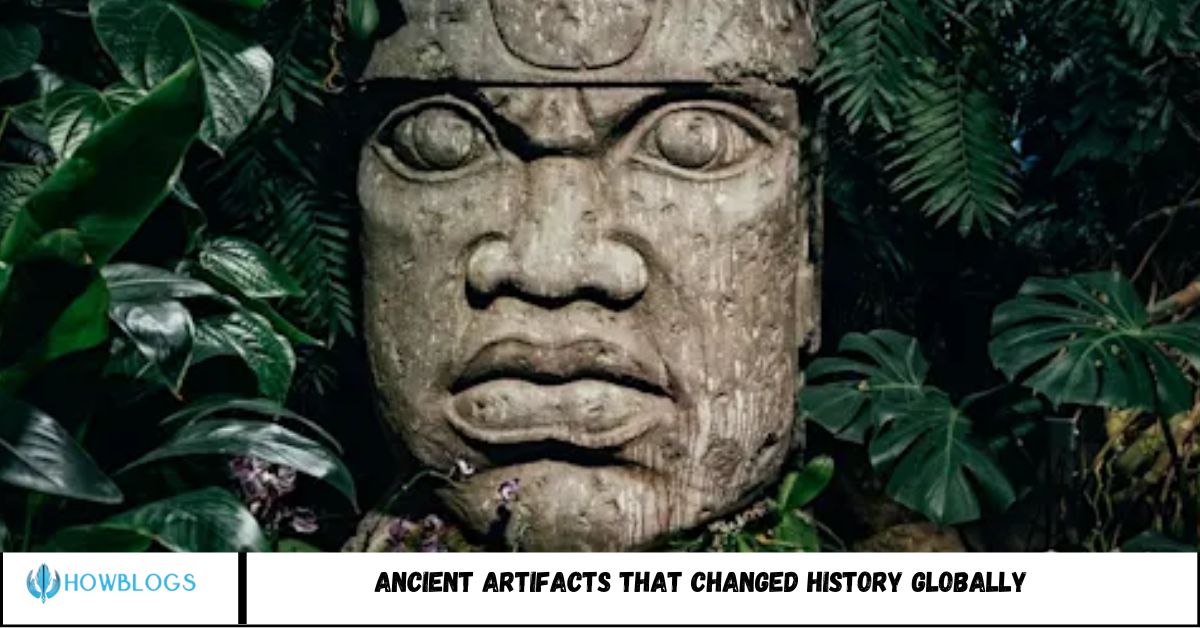Table of Contents
What can a stone tablet, a golden mask, or a clay disc tell us about ancient civilizations?
More than you might think. Throughout history, a handful of ancient artifacts have dramatically reshaped our understanding of human progress, culture, and belief systems. These objects aren’t just museum pieces — they’re game-changers in archaeology, language, religion, and even politics.
What can ancient artifacts really tell us about the past? From the mysterious Venus of Willendorf to the glittering mask of King Tutankhamun, these iconic objects offer more than just visual wonder—they hold the keys to understanding entire civilizations.
You’ve likely heard of the Dead Sea Scrolls or seen photos of Tut’s golden mask, but how much do you really know about their origins and impact? Whether you’re a history buff or just aiming to impress at trivia night, this quick guide breaks down the stories behind six of the most famous ancient artifacts that forever changed how we view the ancient world.
1. Rosetta Stone – The Key to Ancient Egyptian Hieroglyphs
Location Found: Egypt
Date Discovered: 1799
Age: ~2,200 years old
Before its discovery, Egyptian hieroglyphs were a mystery. The Rosetta Stone changed everything. Inscribed in three scripts—Greek, Demotic, and hieroglyphic—it enabled scholars like Jean-François Champollion to finally decode the ancient language.
Impact:
- Opened the door to understanding thousands of Egyptian texts.
- Revolutionized the study of Egyptology.
2. Dead Sea Scrolls – Ancient Texts of Biblical Proportions
Location Found: Qumran Caves, Israel
Date Discovered: 1947
Age: Over 2,000 years old
These nearly 1,000 ancient Jewish manuscripts include texts from the Hebrew Bible, apocryphal works, and community rules. They provide invaluable insight into Second Temple Judaism, a period critical to the origins of Christianity.
Impact:
- Oldest known copies of many biblical texts.
- Clarified religious practices and beliefs in early Judaism.
3. Terracotta Army – Guardians of China’s First Emperor
Location Found: Xi’an, China
Date Discovered: 1974
Age: Over 2,200 years old
Buried to protect Emperor Qin Shi Huang in the afterlife, this army of 8,000+ life-sized soldiers, horses, and chariots stuns visitors with its scale and detail. Each warrior has unique facial features.
Impact:
- Highlights the military might and unification of ancient China.
- Offers a glimpse into funeral and spiritual customs of the Qin Dynasty.
4. Mask of Tutankhamun – The Face of Ancient Egypt
Location Found: Valley of the Kings, Egypt
Date Discovered: 1922
Age: Over 3,300 years old
This solid gold funerary mask of King Tutankhamun remains one of the most iconic symbols of ancient Egypt. Found in a nearly untouched tomb, the mask revealed the wealth and artistry of the New Kingdom.
Impact:
- Sparked global Egyptomania in the 20th century.
- Provided unprecedented insights into royal burial practices.
5. Antikythera Mechanism – The World’s First Computer
Location Found: Off the coast of Antikythera, Greece
Date Discovered: 1901
Age: Over 2,100 years old
Often called the first analog computer, this complex gear-based device could predict eclipses, track planetary movements, and mark Olympic Games.
Impact:
- Proved that ancient Greeks had far more advanced tech than previously believed.
- Challenged long-held assumptions about ancient science and engineering.
6. Phaistos Disc – An Unsolved Mystery of the Bronze Age
Location Found: Crete, Greece
Date Discovered: 1908
Age: Estimated 3,700 years old
Made of fired clay and inscribed with mysterious spiral pictographs, the Phaistos Disc remains undeciphered to this day. Its purpose, origin, and meaning continue to puzzle scholars.
Impact:
- One of the earliest known examples of printing techniques.
- Symbolizes the unknown chapters of ancient Mediterranean civilizations.
Why These Artifacts Still Matter Today
These artifacts are far more than ancient relics:
- They altered the course of history and scholarship.
- They deepened our understanding of language, technology, religion, and power.
- They highlight how far human ingenuity and cultural expression have come.
Each discovery answered old questions—and sparked new ones—forever changing how we see the ancient world.
FAQs
1. What is the most important ancient artifact ever found?
The Rosetta Stone, for its role in decoding Egyptian hieroglyphs.
2. Which artifact is still a mystery today?
The Phaistos Disc, as its script remains undeciphered.
3. What’s the oldest artifact in this list?
The Phaistos Disc, estimated at over 3,700 years old.
4. Why are the Dead Sea Scrolls significant?
They include the earliest known biblical texts, offering insights into early Judaism.
5. Is the Antikythera Mechanism a real computer?
Yes, it’s widely considered the first known analog computer.
6. Where can I see these artifacts?
Many are housed in national museums such as the British Museum, Louvre, and National Museum of China.
Conclusion
These six ancient artifacts are more than stone, gold, or clay. They’re portals into human history—objects that shattered assumptions, rewrote timelines, and connected modern minds with ancient civilizations. Whether deciphering languages or showcasing craftsmanship, each artifact left an undeniable mark on the world.
Curious to learn more about ancient history? Bookmark this article and explore other groundbreaking archaeological finds that continue to shape our future.

